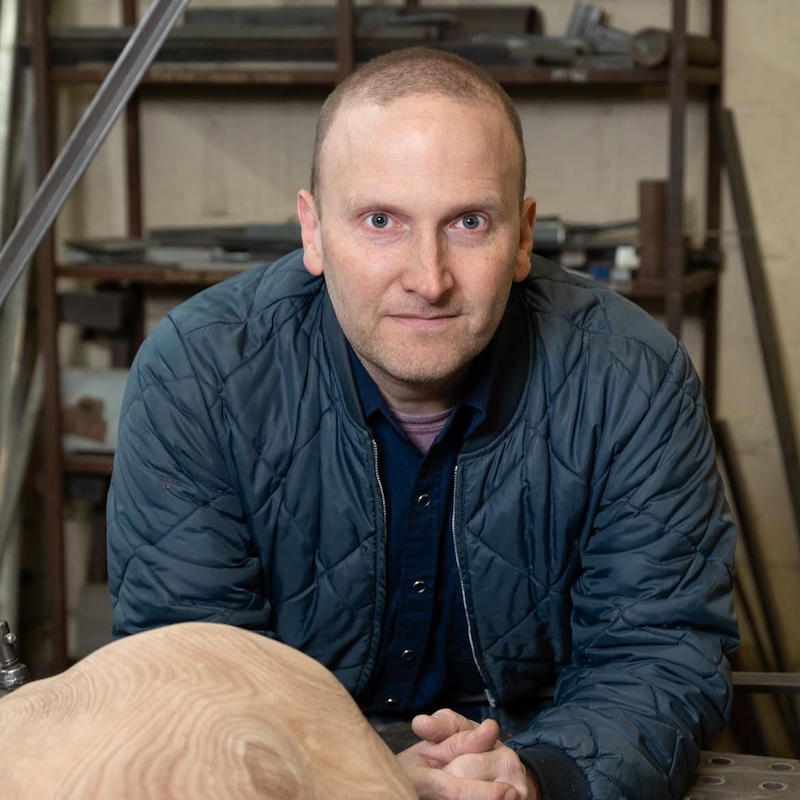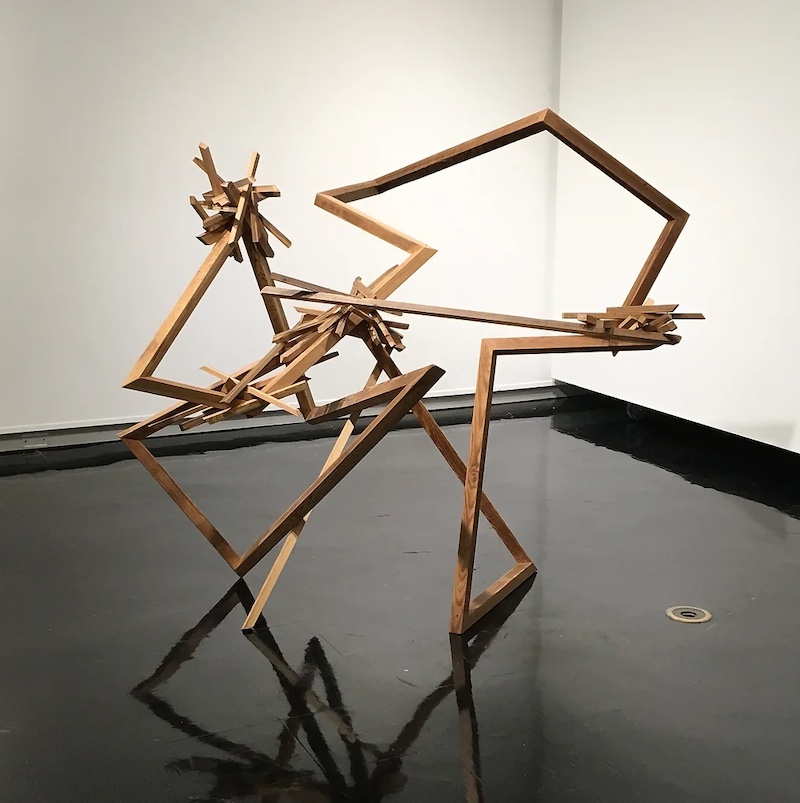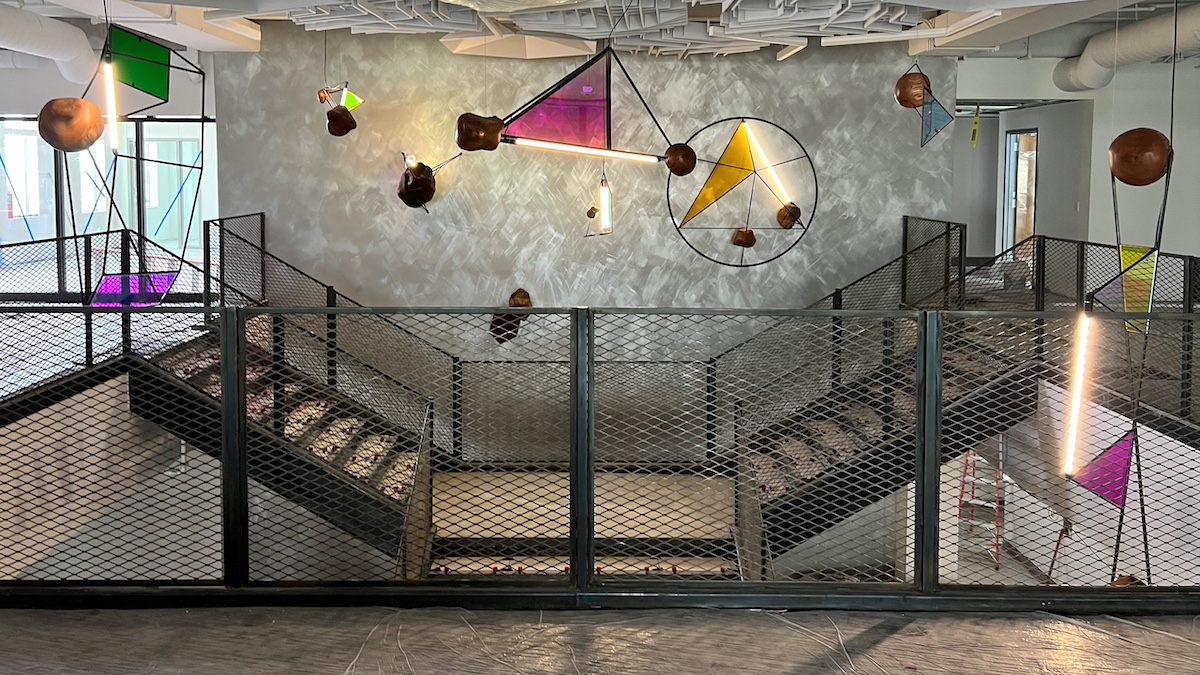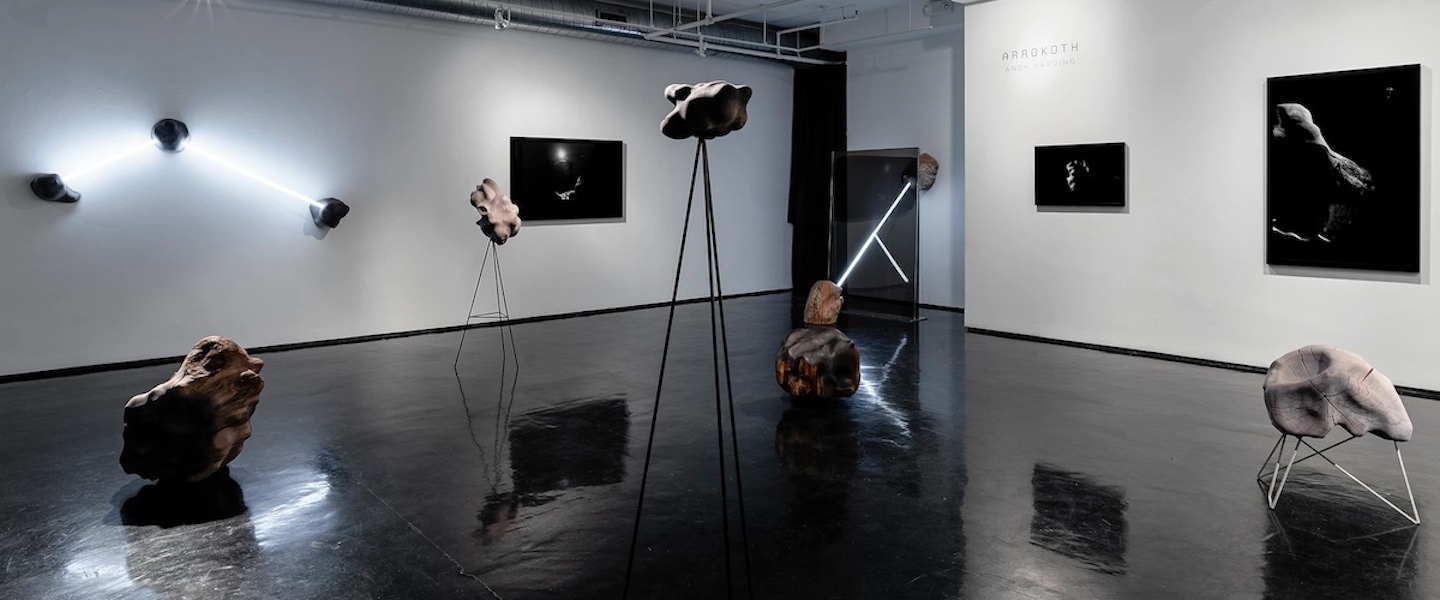Harding shares stories of his work as a sculptor and art installer after studying science
 Sculptor and art installer Andy Harding recently returned to campus to participate in an alumni panel hosted by the Watkins College of Art and the Office of Career & Professional Development. While part of the panel, he shared his artistic journey and advised students on how to define success in their field.
Sculptor and art installer Andy Harding recently returned to campus to participate in an alumni panel hosted by the Watkins College of Art and the Office of Career & Professional Development. While part of the panel, he shared his artistic journey and advised students on how to define success in their field.
Harding did not initially intend to be an artist—in fact, his time as a Belmont undergraduate was quite the opposite. He graduated as a Presidential Scholar in 1998 with degrees in chemistry and physics, returning to audit a few art classes after graduation.
He remained interested in both subjects but quickly discovered that those fields did not suit his career interests after graduation. “The only place I could find a job was doing soil testing at an environmental farm, because I felt like I owed it to myself to at least dip my toe into that field and not totally embarrassed my parents,” Harding said. “It was not a good job. A lot of it was just washing glassware, not actually doing lab work.”
After spending about a year and a half testing soil, two friends asked if he wanted to join them in an art show. He asked his boss if he could go part-time for a few months to prepare. When he was told no, he quit.
“That was the beginning of a period where I wasn’t really bringing in money,” he recalled. “But that was a really important decision, because I committed. I jumped in with both feet, and I was able to progress a lot faster than I would have if I had a ‘proper’ job.”
 As a sculptor, Harding’s background in science heavily influences his art. He feels especially drawn to contrasting materials, like wood and metal or stone and LED lights. This desire to bring opposing natural elements together in harmony can be seen even in his earliest work.
As a sculptor, Harding’s background in science heavily influences his art. He feels especially drawn to contrasting materials, like wood and metal or stone and LED lights. This desire to bring opposing natural elements together in harmony can be seen even in his earliest work.
His pieces have been featured in galleries across the country, including Belmont’s own Leu Art Gallery. In 2015, his sculpture series “Ghost Structures” was on display, another nod to his background in physics.
“They were composed of infinite loops of wood. The best illustration of the scientific thinking behind this work is a quote from a British physicist named Arthur Eddington: ‘Matter is mostly ghostly empty space.’ The open lattice nature of these structures highlights that aspect.”
Along with creating his own art, Harding has found new ways to be involved in others' artistic processes as an art installer.
He began this enterprise nearly 20 years ago while helping some artists friends install a piece in the Nashville airport. After that, he spent several years freelancing in Chicago, handling works by world-renowned artists like Claude Monet, Jasper Johns and Jackson Pollock. Upon returning to Nashville, he founded his own company and has been installing pieces for clients in the city for over a decade.
As someone who has worked extensively as both an artist and art installer, Harding spoke to the value of both and why his new “proper” job is still so fulfilling. “I'm just working with people that I love being around, and it doesn't feel like work to me,” he said. “It can be physically demanding sometimes, but the work itself comes naturally. I don't feel drained mentally by doing it so it, so I don't feel like I can't reserve space in my mind for creative pursuits.”
Most recently, his work was selected as a permanent installation for Colorado State University, Pueblo’s new Technology Building. Titled “Terratechnologia,” the piece is a culmination of all his previous works, highlighting the interplay between natural and human innovation.

"Terratechnologia" by Andy Harding, 2025
The interdisciplinary nature of Harding's work reveals just how vast the art world is, and the many different forms success can take. Through studying at Belmont and saying “yes” to the opportunities that come his way, Harding has made a name for himself as a sculptor, taking the natural and man-made and uniting them into something altogether extraordinary.
Learn more about the programs in this story

